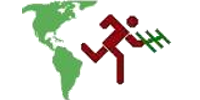Getting Started in ARDF
Your First Equipment
de Dale Hunt WB6BYU es Ken Harker WM5R
Looking at the Equipment pages
of this web site, there are many different options. What is
best for a beginner? If there is a local group that hunts
regularly, they may have some equipment that you can borrow
at the beginning. Ask people with different equipment if you
can listen to it. See how it feels in your hand, and how easy
it is to use. Ask the other hunters why they like the
equipment they are using.
The typical two meter ARDF receiver consists of a short hand-held
yagi antenna with two or three elements, and a dedicated receiver
and attenuator, often mounted on the antenna boom. A short yagi
with a boom of ~50 cm (~20") is small enough to carry through
the woods, and can be designed to have a clean pattern for
direction finding. Many ARDF enthusiasts build these antennas
out of inexpensive steel tape measure material that can survive
rough treatment in the woods. Two meter receivers can be everything
from an HT with an external attenuator, to a dedicated ARDF
receiver with built-in ARDF features like automatic attenuation,
audio S-meters, and more. In the Americas, most ARDF competitions
on two meters use FM transmitters, so having an FM receiver is
important.
If you are just starting out, and you already have a two meter
receiver, the least expensive way to proceed is to build a
tape measure yagi and an offset attenuator. A tape measure yagi
can be built with the steel tape from a cheap tape measure and
some inexpensive pieces of PVC tubing. An battery-powered offset
attenuator can be built from a few parts and mounted on the boom
of the antenna. If you find that you enjoy the sport, you can later
replace the offset attenuator and two meter receiver with a dedicated
ARDF receiver for two meters.
The typical 80 meter ARDF receiver consists of a hand-held CW
receiver with a magnetic loop antenna or a ferrite rod antenna
attached to it. Most simple CW or SSB receiver circuits for 80
meters will work for ARDF. Magnetic loop and ferrite rod antennas
produce a bi-directional pattern, with two symmetrical nulls.
Using an additional sense antenna (a small vertical whip) can
change the pattern to a cardiod shape with a single (but less
sharp) null. Most ARDF receivers for 80 meters use a momentary
contact switch to engage the sense antenna when needed.
| 
